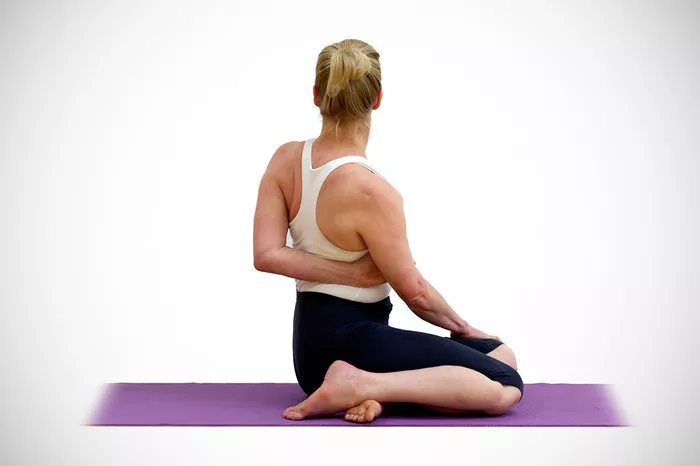Yoga therapy is an integrative approach to health and wellness that utilizes the principles and practices of traditional yoga in a therapeutic context. Unlike general yoga classes, yoga therapy is personalized and often used to address specific physical, mental, or emotional conditions. This approach combines physical postures (asanas), breathing techniques (pranayama), meditation, and lifestyle guidance to promote holistic healing.
The effectiveness of yoga therapy lies in its structure. Practitioners typically guide individuals through a progressive process designed to meet them where they are and gradually help them achieve a state of well-being. This process is usually divided into four essential stages. Each stage builds upon the previous one and contributes to the overall therapeutic outcome.
In this article, we explore these four stages of yoga in detail. Understanding them will not only clarify how yoga therapy works but also help you determine whether it is the right path for your health journey.
Stage One: Initial Assessment and Awareness Building
The first stage in yoga therapy is focused on assessment and awareness. This foundational phase sets the tone for the entire therapeutic journey. The therapist begins by conducting a comprehensive assessment of the client’s physical condition, emotional state, lifestyle, and specific health concerns. This step is critical to developing a customized therapy plan.
Key Elements of the Assessment Phase:
- Client History: A detailed intake interview is conducted to gather information about medical history, current health issues, mental health status, and lifestyle habits.
- Physical Assessment: The therapist may observe posture, range of motion, breathing patterns, and movement limitations.
- Emotional and Mental State: Emotional well-being and stress levels are evaluated to understand the psychological components that may impact healing.
This stage is not solely diagnostic; it is also educative. Clients begin to develop body awareness, noticing tension, habits, or restrictions they may not have previously recognized. This awareness is essential because it forms the basis for making intentional changes later in therapy.
Stage Two: Stabilization and Symptom Management
Once awareness has been cultivated, the next stage involves stabilization and managing acute symptoms. This is particularly crucial for clients dealing with pain, chronic illness, or emotional disturbances such as anxiety and depression. The objective here is to create a safe and supportive environment in which healing can begin.
Goals of This Stage:
- Symptom Relief: Techniques are selected to alleviate physical pain, improve mobility, and reduce emotional stress.
- Energy Balance: Practices that harmonize the body’s energy systems are introduced, such as breathing exercises and restorative postures.
- Routine Formation: A consistent and manageable practice schedule is established.
During this phase, the therapist may employ:
- Gentle asanas tailored to the individual’s capacity
- Breathing practices to regulate the nervous system
- Guided relaxation or Yoga Nidra for emotional calming
Consistency is emphasized in this stage. Regular practice helps recondition the nervous system, ease discomfort, and lay the groundwork for deeper healing. This phase is crucial for building trust—in both the therapist and the process.
Stage Three: Deepening the Practice and Addressing Root Causes
In the third stage of yoga therapy, the focus shifts to addressing the root causes of imbalance rather than merely managing symptoms. By this point, the client typically has a stronger foundation, improved body awareness, and greater emotional stability. This stage allows for deeper exploration and more intensive practices.
Core Objectives:
- Uncovering Patterns: Identifying habitual patterns, both physical and emotional, that contribute to discomfort or dysfunction.
- Emotional Release: Facilitating the safe expression and release of stored emotional tension.
- Strength and Flexibility: Expanding the physical practice to include more challenging postures and sequences.
This is a dynamic and transformative phase. The therapist may include:
- More advanced asanas and breathwork
- Meditation and mindfulness techniques
- Inquiry-based practices like journaling or self-reflection
It is during this phase that clients often report significant shifts. These can include improved mental clarity, enhanced energy levels, and better emotional regulation. Because the practices are now more nuanced and sophisticated, the therapist must ensure they are still accessible and safe for the individual.
Stage Four: Integration and Empowerment
The final stage of yoga therapy emphasizes integration and long-term empowerment. After symptom relief and deep healing, it becomes vital to sustain progress and maintain wellness independently. This stage is about transitioning from guided therapy to self-directed practice.
Key Features:
- Self-Practice: The client develops a personal practice routine that suits their lifestyle and needs.
- Resilience Building: Practices aimed at maintaining balance during life’s inevitable challenges are emphasized.
- Lifelong Learning: Clients are encouraged to continue exploring yoga philosophy and deeper practices for ongoing growth.
In this stage, the therapist functions more like a coach or mentor. The relationship becomes less directive and more collaborative. The goal is to ensure that the individual feels capable and confident in managing their well-being through yoga.
Unordered strategies often used in this phase include:
- Creating personalized home practice guides
- Introducing philosophical texts or yoga ethics (Yamas and Niyamas)
- Encouraging participation in community or group classes for support
This integrative approach not only helps sustain physical health but also nurtures emotional intelligence, spiritual curiosity, and a resilient mindset.
Conclusion
Yoga therapy is not a one-size-fits-all approach. Its power lies in its adaptability and progressive structure. The four stages—assessment and awareness, stabilization, deep healing, and integration—offer a comprehensive roadmap for healing that respects the complexity of the human experience.
Whether you are coping with chronic pain, stress, or simply seeking a more meaningful connection with yourself, understanding these stages can help you make informed decisions about your wellness journey. Each stage serves a distinct purpose and together they create a pathway that leads not just to healing, but to empowerment.
If you’re considering yoga therapy, look for a certified therapist who understands this model and can tailor the process to your unique needs. With commitment, patience, and the right guidance, yoga therapy can be a transformative tool for lifelong well-being.
Related Topics:


















